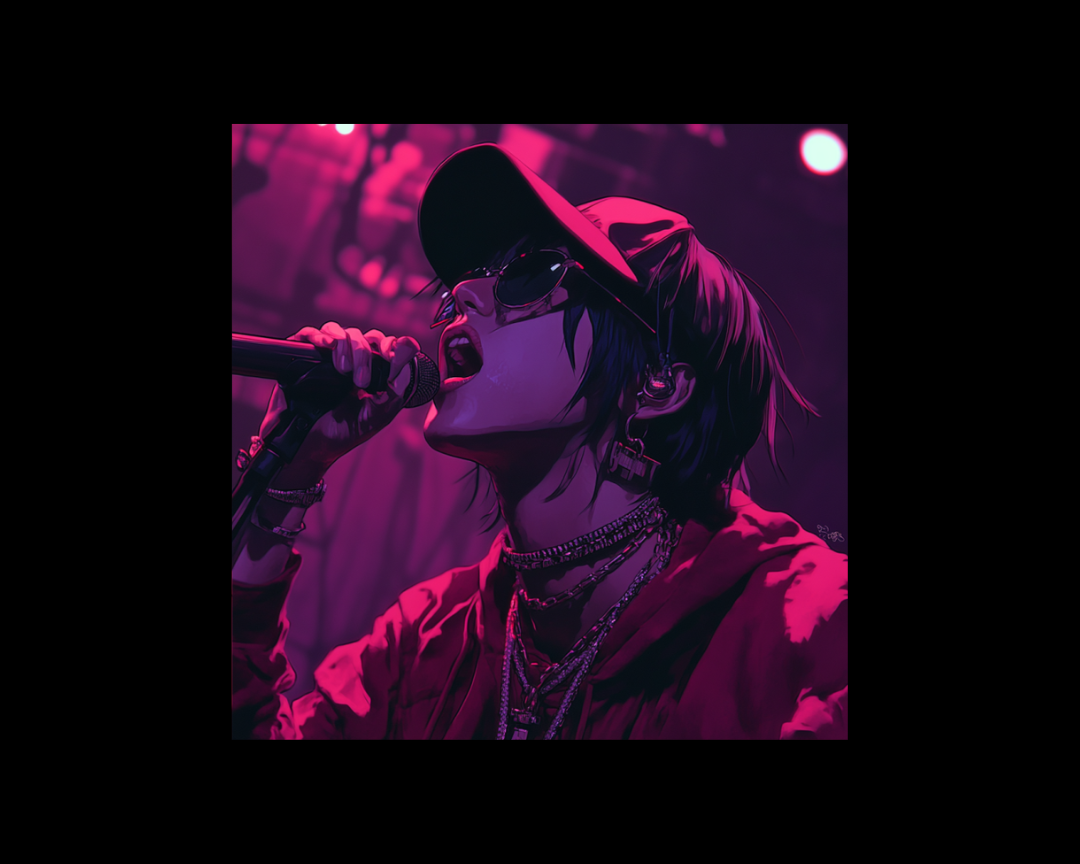“America’s News Influencers”: Insights into the Rise of Social Media News Creators
@winsomepr Bye old media. Ya basic. #news ♬ APT. - ROSÉ & Bruno Mars
-3.png)
The advertising industry's transformation toward creator-driven marketing has reached another milestone as Publicis Groupe acquires influencer marketing platform Captiv8, creating what may be the world's most comprehensive creator economy infrastructure. This strategic acquisition signals how traditional advertising agencies are adapting to fundamental shifts in consumer attention and brand engagement.
The deal represents more than technological acquisition—it's a recognition that influencer marketing has evolved from experimental tactics to essential business strategy. As brands like Unilever commit to allocating half their marketing budgets to social media, agencies must build capabilities that match this unprecedented investment shift.
Captiv8 brings a network of 15 million creators to Publicis, representing approximately 95% of influencers with over 5,000 followers globally. This massive scale, combined with Captiv8's technology platform that processes over 2.5 billion social posts annually across 120 countries, creates unprecedented reach for Publicis clients.
The acquisition, reportedly valued at $150 million according to Wall Street Journal sources, follows Publicis' $500 million purchase of Influential last year. Together, these investments total $650 million in creator economy infrastructure, demonstrating the agency's commitment to dominating this rapidly growing sector.
Captiv8's capabilities extend beyond creator discovery into social commerce, measurement, and social listening—areas where traditional advertising agencies have historically struggled. The platform's branded storefronts and TikTok Shop partnerships align with the industry's shift toward shoppable social media content that drives direct sales rather than just brand awareness.
The combined entity will operate under Publicis Connected Media, integrating Captiv8's technology with Influential's client services capabilities. This structure creates end-to-end influencer marketing solutions from creator discovery through campaign execution and performance measurement.
Publicis plans to enhance both platforms through Epsilon, its data marketing division that reaches nearly 4 billion unique consumer profiles worldwide. This integration could revolutionize influencer marketing by applying sophisticated audience targeting and measurement capabilities typically reserved for traditional digital advertising.
Epsilon's identity graph technology could enable more precise creator-audience matching, helping brands identify influencers whose followers align with target demographics and psychographics. This data-driven approach addresses longstanding influencer marketing challenges around audience quality and campaign attribution.
The integration also supports Publicis CEO Arthur Sadoun's vision of "earned-first programs" that generate authentic virality while connecting directly to commerce. By combining creator networks with advanced data analytics, Publicis aims to make influencer marketing as measurable and scalable as traditional advertising channels.
This technological sophistication differentiates Publicis from competitors who may have creator relationships but lack the data infrastructure to optimize campaigns systematically. The combination could establish new industry standards for influencer marketing effectiveness and accountability.
The acquisition reflects broader market shifts as brands redirect budgets from traditional media to creator-driven content. Unilever's recent announcement to increase social media spending from 30% to 50% of total marketing budget while expanding creator partnerships 20-fold exemplifies this industry-wide transformation.
Traditional media consumption continues declining, particularly among younger demographics who increasingly discover and engage with brands through creator content. This shift forces agencies to build capabilities that didn't exist five years ago while potentially cannibalizing their traditional media buying revenues.
Captiv8's client roster—including Kraft Heinz, American Express, and the NBA—demonstrates that creator marketing has moved beyond consumer packaged goods into B2B and enterprise sectors. This expansion suggests the addressable market for influencer services continues growing across virtually all industry categories.
The creator economy's estimated $104 billion global value creates opportunities for agencies that can effectively scale influencer partnerships while providing sophisticated measurement and optimization capabilities that individual brands cannot develop internally.
Publicis' aggressive creator economy investments position it ahead of other major agency holding companies in a rapidly consolidating market. While WPP, Omnicom, and IPG have made influencer marketing acquisitions, none match Publicis' scale of investment or integrated approach.
The acquisitions also reflect Publicis' strong financial performance relative to agency sector peers. The company's 4.9% organic revenue growth in Q1 outpaced competitors and provided resources for strategic investments while rivals struggled with declining client spending.
Industry consolidation benefits agencies by creating sufficient scale to compete with platform-native creator programs from TikTok, Instagram, and YouTube. Individual agencies often lack the resources to build comprehensive creator networks and supporting technology infrastructure.
However, consolidation also raises questions about creator diversity and platform independence. As agencies control larger creator networks, individual influencers may have fewer negotiating options while brands face less competition among service providers.
Both Captiv8 and Influential emphasize artificial intelligence capabilities that could transform influencer marketing efficiency and effectiveness. AI applications include creator discovery, content optimization, fraud detection, and performance prediction—areas where manual processes currently limit campaign scale.
Publicis' integration plans suggest AI will play central roles in creator-brand matching, campaign optimization, and cross-platform measurement. These capabilities could enable automated influencer campaigns similar to programmatic advertising, potentially reducing costs while improving targeting precision.
The technology focus also addresses persistent industry challenges around fake followers, engagement manipulation, and campaign attribution. AI-powered fraud detection and performance measurement could increase advertiser confidence in influencer marketing investments.
However, excessive automation risks commoditizing creator relationships and reducing the authentic connections that make influencer marketing effective. Balancing technological efficiency with human creativity and relationship management remains crucial for long-term success.
Captiv8's social commerce capabilities align with broader e-commerce trends as social platforms become direct sales channels rather than just discovery mechanisms. TikTok Shop partnerships and branded storefronts enable creators to drive immediate purchases instead of relying on traditional conversion funnels.
This direct-to-consumer integration transforms influencer marketing ROI calculations by enabling immediate revenue attribution rather than relying on brand awareness metrics or indirect conversion tracking. Brands can justify influencer spending through direct sales results rather than engagement metrics alone.
The social commerce focus also supports creator monetization beyond traditional sponsorship deals. Revenue-sharing arrangements and affiliate marketing programs provide sustainable income streams that benefit both creators and brands while reducing upfront campaign costs.
As social commerce continues growing, agencies with integrated capabilities will have competitive advantages over those focused solely on traditional advertising metrics and objectives.
Captiv8's presence in 120 countries provides Publicis with global creator network coverage that matches multinational client needs. This international scale becomes increasingly important as brands seek consistent influencer marketing approaches across diverse markets.
Local creator networks require cultural understanding and language capabilities that global agencies often struggle to develop organically. Captiv8's existing international presence accelerates Publicis' ability to serve clients with integrated global campaigns.
The global creator economy varies significantly across regions in terms of platform preferences, content formats, and monetization mechanisms. Captiv8's multi-country experience provides insights that could improve campaign effectiveness in markets where Publicis previously lacked creator expertise.
International expansion also diversifies revenue streams and reduces dependence on any single market's economic conditions or regulatory changes that might affect advertising spending.
The combined Publicis-Captiv8-Influential entity creates new possibilities for integrated marketing campaigns that blend traditional advertising with creator-driven content. This integration could eliminate artificial distinctions between "paid" and "earned" media by enabling coordinated campaigns across all channels.
Brands may increasingly expect agencies to provide comprehensive social media capabilities rather than partnering with specialized influencer marketing firms. This expectation could drive further agency consolidation as traditional advertising agencies acquire creator economy expertise.
The scale and sophistication of Publicis' creator capabilities may set new industry standards for campaign measurement, creator compensation, and performance optimization. Smaller agencies and independent influencer marketing firms may struggle to compete without similar technological infrastructure.
Success could also demonstrate the viability of treating influencer marketing as a core advertising discipline rather than experimental tactics, potentially accelerating budget shifts from traditional media to creator-driven content across the industry.
Publicis' strategic investments in creator economy infrastructure signal that influencer marketing has matured from experimental tactic to essential business capability. The combination of scale, technology, and data analytics could establish new standards for campaign effectiveness and measurement.
For brands, this consolidation offers opportunities for more sophisticated influencer campaigns while potentially reducing the complexity of managing multiple vendor relationships. However, it also raises questions about creator diversity and platform independence as agencies control larger portions of the creator ecosystem.
Ready to develop creator marketing strategies that leverage emerging technologies while maintaining authentic brand relationships? Our expert content creators at Hire a Writer understand how to navigate the evolving creator economy, from influencer partnership strategies to integrated social commerce campaigns that drive measurable business results.

@winsomepr Bye old media. Ya basic. #news ♬ APT. - ROSÉ & Bruno Mars

5 min read
Well, that didn't take long. Instagram's standalone Edits video editing app is barely a week old, and it's already received its first substantial...

5 min read
The Digital VIP Room Has Arrived on Instagram Remember those exclusive clubs with secret passwords whispered into bouncers' ears? Instagram just...